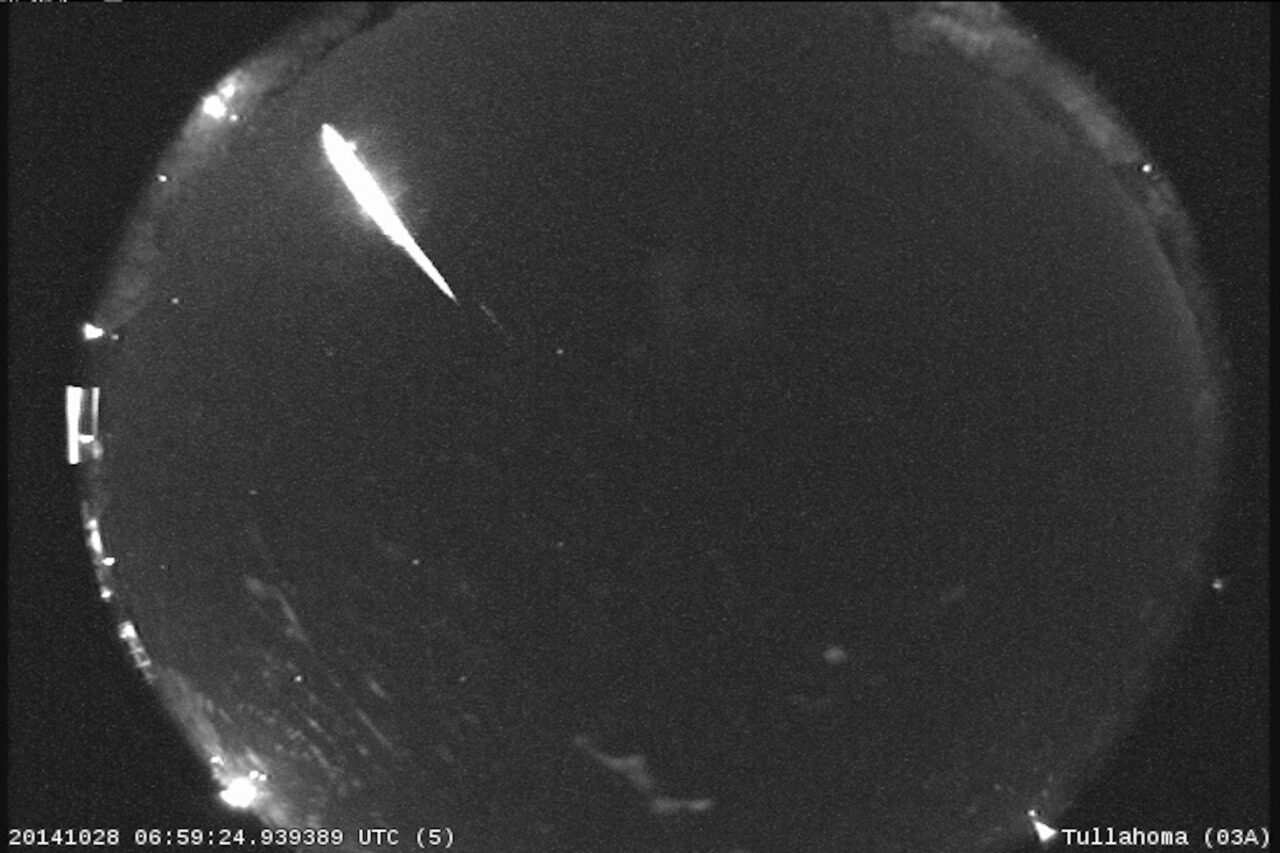Science
Earth Faces Potential Threat from Taurid Meteor Swarms in 2032, 2036

Each autumn, Earth traverses the debris left by Comet Encke, resulting in the stunning display of fireballs known as the Taurids meteor shower. This event not only captivates skywatchers but may also present a future risk to our planet. A recent study published in Acta Astronautica highlights potential dangers posed by larger meteors from the Taurid stream during encounters in 2032 and 2036.
The Taurids meteor shower occurs annually between late October and early November, radiating from the constellation Taurus. Comet Encke, which completes an orbit around the Sun approximately every three years, leaves behind a trail of dust and rock. Earth passes through this debris field twice yearly—once during the fall and again in June, although the latter event is not visible to the naked eye.
Researchers found that every three to seven years, the Taurids can intensify, shedding larger fragments that lead to a noticeable increase in fireballs. The study conducted by a team led by Mark Boslough at the University of New Mexico aimed to explore whether a concentration of larger meteors could pose a significant hazard to Earth.
Using observational data and planetary defense modeling, the researchers determined that the risk of encountering air-burst-sized Near-Earth Objects—those capable of exploding in the atmosphere rather than impacting the surface—is greater than previously believed. They also examined the possibility of a Taurid resonant swarm, where clusters of debris are influenced by the gravitational pull of Jupiter.
The Taurid stream orbits the Sun seven times for every two orbits of Jupiter. This gravitational interaction can pull fragments of debris together, forming denser clusters. Boslough explained, “The resonant swarm is theoretical, but there is some evidence that a sparse swarm of small objects exists because bright fireballs and seismic signatures of impacts on the moon have been observed at times that the theory has predicted.”
If this hypothesized resonant swarm materializes, Earth could face an increased impact risk during the peak years of 2032 and 2036. Fortunately, scientists have time to monitor these clusters and devise strategies to mitigate potential impacts. “We have the technology to test the Taurid resonant swarm by using existing telescopes for targeted sky surveys in 2032 and 2036 when the hypothetical swarm will make very close approaches,” Boslough noted.
Furthermore, he added, “If we discover the objects with enough warning time, then we can take measures to reduce or eliminate the risk.” Despite the increased focus on these events, the overall probability of a significant impact remains extremely low. During the approach in 2036, the swarm will originate from the direction of the Sun, meaning that fireballs may only be visible if they are exceptionally bright.
The research underscores the need for ongoing observation and preparedness as Earth continues to navigate the cosmic debris left by its celestial neighbors.
-

 Science2 weeks ago
Science2 weeks agoIROS 2025 to Showcase Cutting-Edge Robotics Innovations in China
-

 Politics2 weeks ago
Politics2 weeks agoJudge Considers Dismissal of Chelsea Housing Case Citing AI Flaws
-

 World2 weeks ago
World2 weeks agoBravo Company Veterans Honored with Bronze Medals After 56 Years
-

 Health2 weeks ago
Health2 weeks agoStartup Liberate Bio Secures $31 Million for Next-Gen Therapies
-

 Lifestyle2 weeks ago
Lifestyle2 weeks agoStone Island’s Logo Worn by Extremists Sparks Brand Dilemma
-

 Top Stories2 weeks ago
Top Stories2 weeks agoIndonesia Suspends 27,000 Bank Accounts in Online Gambling Crackdown
-

 Health2 weeks ago
Health2 weeks agoTop Hyaluronic Acid Serums for Radiant Skin in 2025
-

 Sports2 weeks ago
Sports2 weeks agoMel Kiper Jr. Reveals Top 25 Prospects for 2026 NFL Draft
-

 World2 weeks ago
World2 weeks agoHoneywell Predicts Record Demand for Business Jets Over Next Decade
-

 Sports2 weeks ago
Sports2 weeks agoYamamoto’s Mastery Leads Dodgers to 5-1 Victory in NLCS Game 2
-

 Lifestyle2 weeks ago
Lifestyle2 weeks agoMary Morgan Jackson Crowned Little Miss National Peanut Festival 2025
-

 Science2 weeks ago
Science2 weeks agoArizona State University Transforms Programming Education Approach









